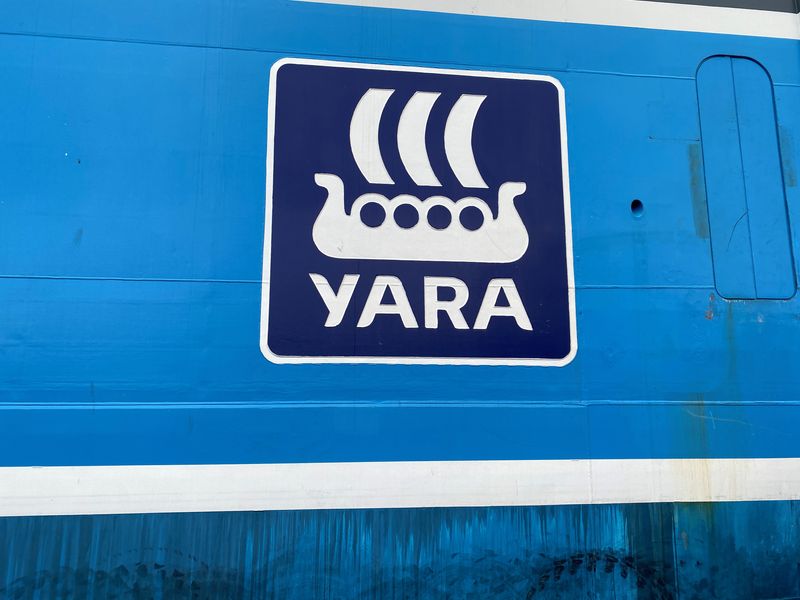OSLO (Reuters) - Norway's Yara is considering two sites for a second North American project which would take advantage of U.S. subsidies and cheap natural gas to make low-carbon "blue" ammonia and export it to Europe, a senior executive said.
The main driver for building ammonia plants in North America is the lower cost of natural gas, where the key ingredient is about a quarter of the benchmark price in Europe.
"When you build large-scale blue ammonia with CCS (carbon capture and storage) and get the tax credits in the U.S., that ends up being cheaper actually than that produced in Europe today," Magnus Krogh Ankarstrand, president of the Yara Clean Ammonia subsidiary, told Reuters.
So-called blue ammonia is produced from natural gas, with the carbon dioxide (CO2) byproduct captured and stored.
The new investments Yara is considering in North America, will benefit from the U.S. Inflation Reduction Act (IRA) incentives. The fertiliser maker will also earn credits under the European Union's emission permits trading scheme when importing low-carbon ammonia into Europe.
U.S. taxpayers would effectively subsidise removing CO2 from ammonia which is then exported for European use, he said.
Canadian pipeline group Enbridge and Yara said in March they aimed to invest up to $2.9 billion in blue ammonia output in Texas in what would be Yara's biggest production site.
"The new one will be of a similar size to the one in Corpus Christi," Ankarstrand said.

Yara estimates that the IRA tax credits, including $85 per tonne of CO2 stored, represent about $150 in tax credit per tonne of ammonia produced.
The company has scheduled a capital markets day on June 26 at which it is due to update investors on its investment plans.